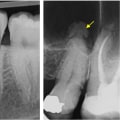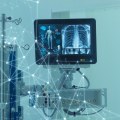Medical imaging is a powerful tool that has revolutionized the way doctors diagnose and treat diseases. It provides vital information about a patient's health to their doctor, and can greatly influence the diagnosis and treatment of diseases. Medical imaging includes ultrasound, x-rays, MRIs, and CT scans, and is used to create 3D images of the body to detect changes or abnormalities. It is also used to create 3D holographic models that show complete anatomical details and provide visibility into the human biological system.
Advanced techniques such as 3D mammography are used to create detailed images of breast tissue for breast cancer analysis. Sedation for imaging, surgery, or any other procedure involves risks of aspiration, prolonged sleepiness, and inability to sleep the night after the procedure. Computer systems analyze detector data and produce real images of the area where radioactive tracers are injected. Ultrasound uses high-frequency sound waves to diagnose organs and body structure, while x-rays are used in a technique known as “angiography” to obtain images of blood vessels.
Radiologists should be consulted before using diagnostic imaging technologies that contain high doses of radiation. The UBM uses frequencies of 35 MHz or higher to provide high-resolution images compared to conventional ophthalmic ultrasound techniques. Digital mammography has the advantage that the diagnosis is made using a computerized system that generates easily accessible images and the transmission, retrieval and storage of better quality images. Functional ultrasound (UF) is highly applicable to obtaining images of the brain and detects the transient alternation of blood volume in the brain with a higher resolution than other types of brain imaging.
Magnetic resonance imaging is a powerful diagnostic imaging technique that uses magnets instead of radiation to create images of the body. Medical imaging has many benefits for both doctors and patients. It allows doctors to find and treat patients more effectively, better understand their ailments and complaints, and diagnose disorders more accurately. It also helps reduce the risks associated with sedation for imaging, surgery, or any other procedure. Finally, it helps reduce the amount of radiation exposure from x-rays and CT scans.






